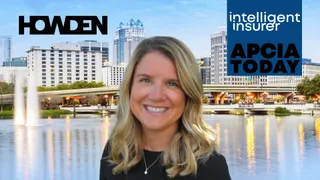
Data, AI, tort reform and capital are shaping US casualty
The US casualty reinsurance market is undergoing rapid change. Rising rates, reduced limits and the growing influence of data and technology are reshaping how carriers and reinsurers operate. At the same time, social inflation and litigation funding are creating new complexities. Speaking to APCIA Today, Carrie Byler, managing director, head of US general casualty, discusses the forces driving today’s market ahead of 1.1 renewals.
Key points:
Rates rising, limits reduced
AI and data quality critical
Tort reform and funding in focus
What are this year’s defining themes in the US casualty reinsurance market?
One key trend is rate. We’re seeing a continued push for rate increases across the board, coupled with the reduction in limits. Across our database, the average umbrella/XS limit deployed is $7.4 million. With these portfolio changes, the expectation is carriers are operating in a very different market than a few years ago.
There has also been an explosion in the availability of data and a need for increased data quality. When this data is leveraged correctly, underwriters have so much more information, and we are seeing tangible pricing and capacity benefits.
AI is also a key component of this, and it has its pros and cons. What are your thoughts?
We’re committed to helping clients understand how AI can enhance their strategic goals, but it has to be implemented correctly. We talk a lot about how AI should be used for “augmented” decision-making, not “automatic” decision-making. A comprehensive data governance process is essential: clear model documentation, audit trails and human-in-the-loop controls so efficiency gains don’t come at the expense of compliance, fairness or data quality
“AI should be used for augmented decision-making, not automatic decision-making.”
With the right controls in place, AI can have an incredible impact on day-to-day operations. We’re already seeing that in areas such as claims handling, underwriting, predictive modelling and operational efficiency, particularly in reducing low-value work. Carriers might have different approaches and applications for the technology, but across the board, there is strong focus on ensuring they remain at the forefront.
What is being done to address the impact of social inflation and litigation funding in the US?
Claims management strategies are critical, but there is also a need to educate the consumer on the broader societal impacts of social inflation. As we’ve learned, the average American household pays around $4,200 “tort tax” annually as a result of legal abuse.
Just as important is continuing to focus on who is benefiting from the large settlements. Plaintiff attorneys are benefiting significantly, with standard contingency fees from 30%-40% and, in some cases, reaching 50% of the settlement.
Transparency around settlements, non-economic damages and who is funding the litigation is critical. We are seeing some positive steps towards achieving this with the Georgia Tort Reform Bill passed in April and bills in states like Louisiana and South Carolina. Elsewhere, such as Texas, Florida, Oklahoma and Arkansas, tort reform bills are under review.
How is litigation funding shaping the landscape?
It is also a key part of the conversation. Depending on the source, the U.S. litigation funding market is expected to reach $20-25 billion in 2025. As an industry, we are working on educating the public about its negative impacts. We want to make sure plaintiffs are never forced to prioritise a funder’s ROI over their own best interests. The government needs to do more on regulation and legislation to prevent US casualty claims being an asset class for investors.
What effect has the influx of third-party capital into the casualty market?
For a long time, third-party capital focused more on the shorter-tail lines, with the global property cat bond market continuing to grow rapidly. In 2025, the market is estimated to reach around $55 billion. While well below the size of the property ILS market, and more specifically, the property cat bond market, casualty ILS is experiencing significant growth, driven by interest from both cedants and investors. We expect this pace only to accelerate. Casualty ILS offers cedants the opportunity to diversify their sources of capital, while also creating exciting opportunities for both cedants and investors.
What are your expectations 1/1 for US casualty reinsurance renewals?
There will be a focus on individual underwriting strategies, risk selection, rate and limit management strategies, including premium-to-limit balance. Knowledgeable teams will continue to outperform the market.
Cedants must properly articulate their strategy, the industries and segments they operate in and any re-underwriting changes made to the portfolio. With social inflation bearing down, data quality is critical. Cedants that can demonstrate why they should be differentiated will attract the greatest capacity and best terms.
Carrie Byler is managing director, head of US general casualty at Howden Re.
For more news from the American Property Casualty Insurance Association (APCIA) click here.
Did you get value from this story? Sign up to our free daily newsletters and get stories like this sent straight to your inbox.
Editor's picks
Editor's picks
More articles
Copyright © intelligentinsurer.com 2024 | Headless Content Management with Blaze

